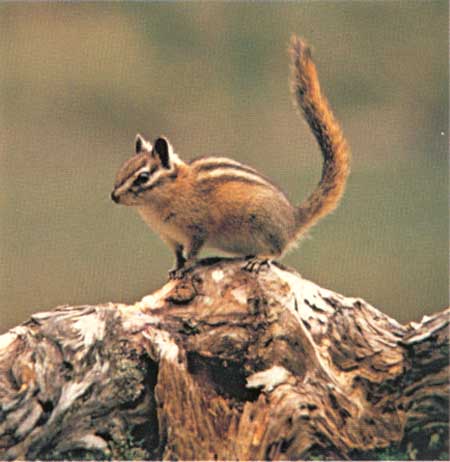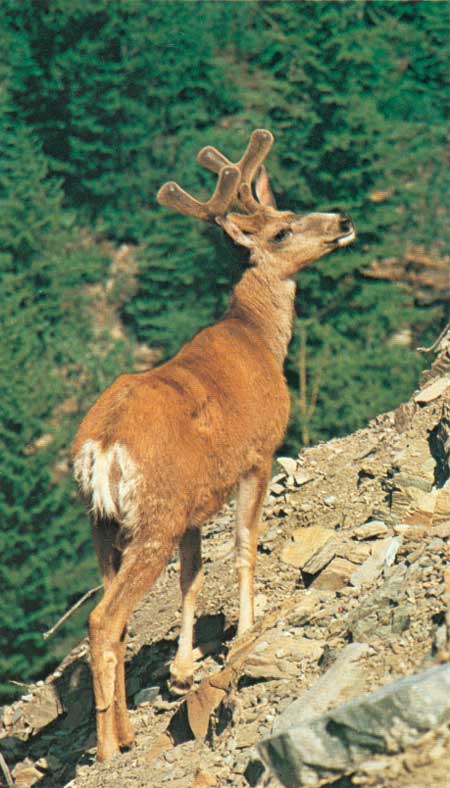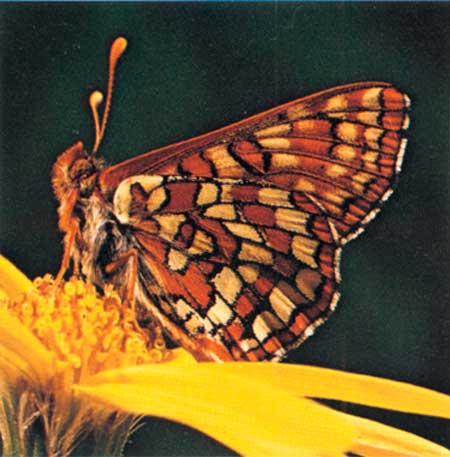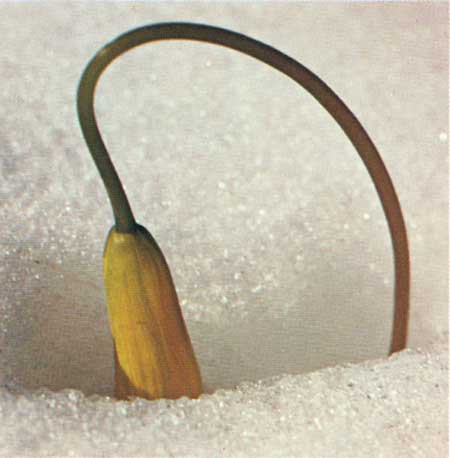
Chipmunks are found in every community, from prairie to
tundra, in Glacier. Each of the park's three very similar species has
its preferred habitat. The diurnal counterpart to nocturnally active
mice, which have the same diet of seeds, berries and occasional insects,
chipmunks adapt easily to the presence of people and become nuisances if
encouraged by handouts. Feeding rodents is dangerous and is harmful to
them. By altering their diets and blunting their cautious instincts,
daily exposure to "free lunches" makes the animals less fit to face the
harsh realities of their natural environment.
|

Unlike whitetail deer, which remain in lowland areas all
year, mule deer range upward into high meadows during the summer. The
bucks, especially, are wanderers and travel together. Velvet antlers,
worn during the time of summer sociability, presage the autumn contests
to come.
|

The checkerspot butterfly belongs to the most diverse
group of animals on the planet—the insects, whose importance can
hardly be overestimated. They not only help recycle nutrients in the
living community and provide an abundant food base for other lifeforms,
but are instrumental in pollinating most of the earth's terrestrial
plants.
|

Alpine vegetation must be able to survive freezing
temperature during the growing season, since winter conditions are
possible even in summer. Early bloomers, such as the glacier lily,
endure repeated snowfalls during the unstable weather conditions of
June.
|
|









